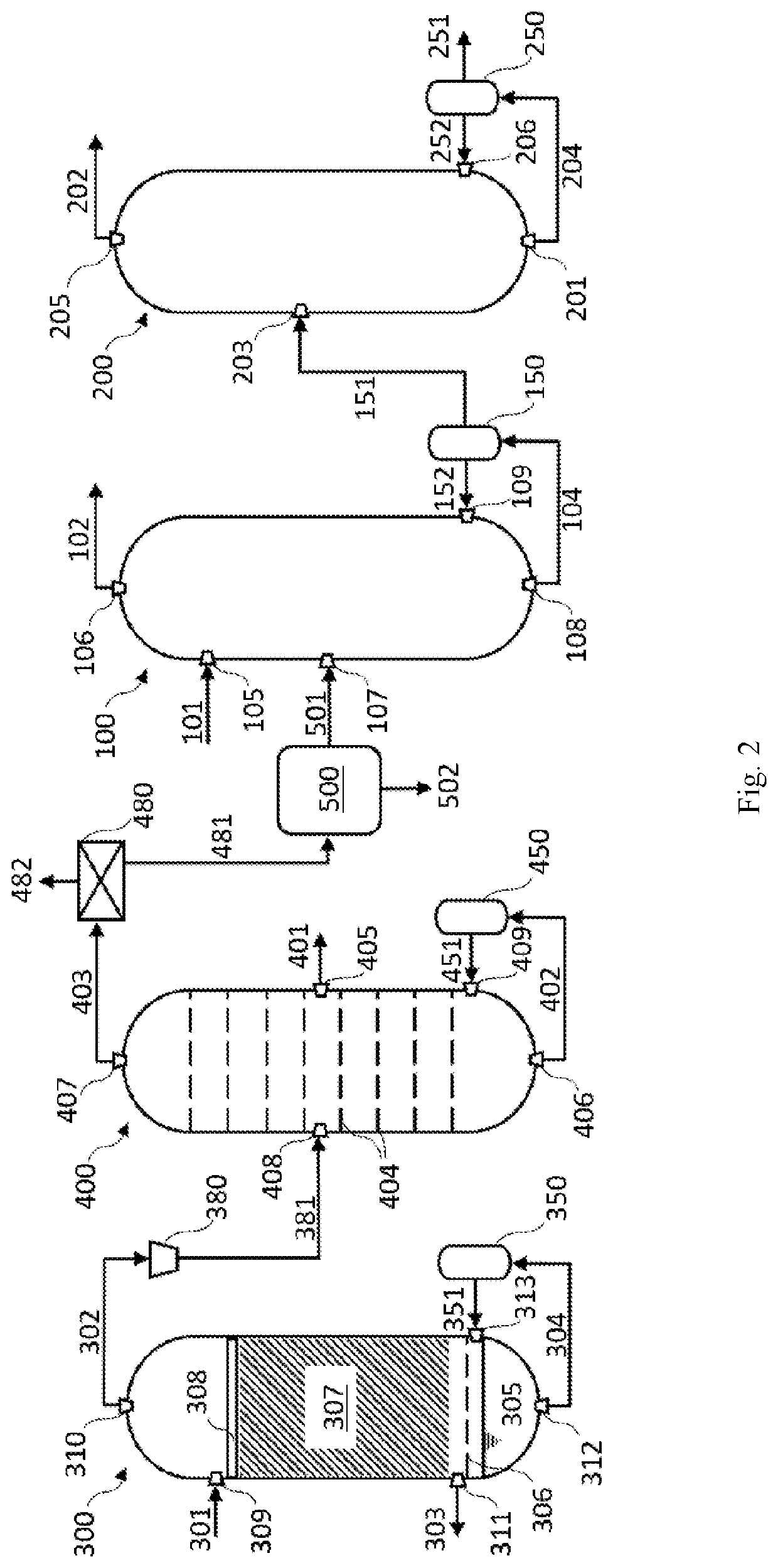Process for recovering close boiling products
a technology of close boiling and product, applied in vacuum distillation separation, separation process, physical/chemical process catalyst, etc., can solve the problems of reducing the amount of carbon in the filtrate, reducing the proportion of isopropanol, and reducing the proportion of ethanol subsequently. , the effect of increasing the proportion of isopropanol
- Summary
- Abstract
- Description
- Claims
- Application Information
AI Technical Summary
Benefits of technology
Problems solved by technology
Method used
Image
Examples
first embodiment
[0121]A first embodiment is a method for recovering product from a fermentation broth, the method comprising:[0122]a. passing a fermentation broth comprising microbial biomass, ethanol, and isopropanol from a bioreactor to a vacuum distillation vessel;[0123]b. partially vaporizing the fermentation broth to produce a product enriched stream, the product enriched stream comprising ethanol and isopropanol, and a product depleted stream, the product depleted stream comprising microbial biomass;[0124]c. passing at least a portion of the product depleted stream back to the bioreactor;[0125]d. passing at least a portion of product enriched stream to an extractive distillation vessel; and[0126]e. distilling the product enriched stream in the extractive distillation vessel in the presence of an extractive distillation agent to obtain an overhead product and distillation bottoms, wherein:[0127]i. at least a portion of the ethanol is recovered in the overhead product and at least a portion of ...
second embodiment
[0152]A second embodiment is a method for recovering product from a product enriched stream, the method comprising:[0153]a. passing a product enriched stream, comprising ethanol and isopropanol, to a dehydration reactor;[0154]b. dehydrating the product enriched stream to produce a dehydrated product stream comprising ethylene and propylene, and a water-rich stream; and[0155]c. passing the water-rich stream to the bioreactor.
[0156]The method of the second embodiment wherein at least a portion of the product enriched stream is received from a vacuum distillation vessel operated at conditions to partially vaporize a fermentation broth comprising microbial biomass, ethanol, and isopropanol, to produce the product enriched stream and a product depleted stream comprising microbial biomass.
[0157]The method of the second embodiment wherein at least a portion of the product enriched stream is received from a distillation vessel operated at conditions to distill a fermentation broth comprisin...
third embodiment
[0166]A third embodiment is a method for recovering product from a product enriched stream, the method comprising:[0167]a. passing a product enriched stream, comprising ethanol and isopropanol, to an extractive distillation vessel; and[0168]b. distilling the product enriched stream in the presence of an extractive distillation agent to obtain an overhead product and distillation bottoms, wherein[0169]i. at least a portion of the isopropanol is recovered in the overhead product and at least a portion of the ethanol is recovered in the distillation bottoms; or[0170]ii. at least a portion of the ethanol is recovered in the overhead product and at least a portion of the isopropanol is recovered in the distillation bottoms.
[0171]The method of the third embodiment wherein at least a portion of the product enriched stream is received from a distillation vessel operated at conditions to distill a fermentation broth comprising ethanol, isopropanol, and water to produce a product enriched str...
PUM
| Property | Measurement | Unit |
|---|---|---|
| pressure drop | aaaaa | aaaaa |
| pressure | aaaaa | aaaaa |
| pressure | aaaaa | aaaaa |
Abstract
Description
Claims
Application Information
 Login to View More
Login to View More - R&D
- Intellectual Property
- Life Sciences
- Materials
- Tech Scout
- Unparalleled Data Quality
- Higher Quality Content
- 60% Fewer Hallucinations
Browse by: Latest US Patents, China's latest patents, Technical Efficacy Thesaurus, Application Domain, Technology Topic, Popular Technical Reports.
© 2025 PatSnap. All rights reserved.Legal|Privacy policy|Modern Slavery Act Transparency Statement|Sitemap|About US| Contact US: help@patsnap.com



